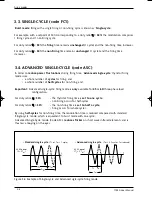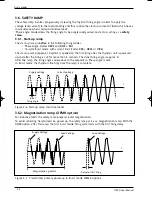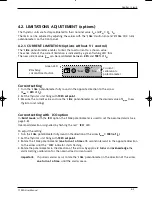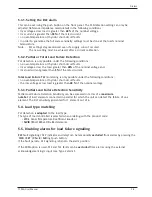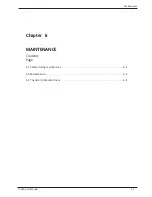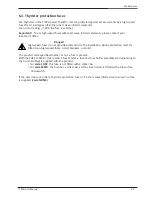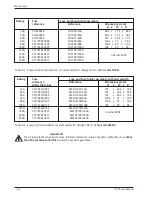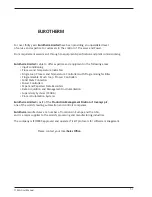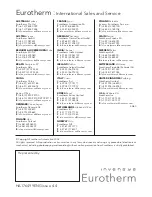
7100A User Manual
5-5
Alarms
5.3.1. Setting the DLF alarm
This can be set using the push button on the front panel. The PLF detection setting can only be
adjusted (reference impedance recalculated) in the following conditions :
• rms voltage across load is greater than
40 %
of the nominal voltage
• rms current is greater than
30%
of the rated current
• no over-temperature or thyristor short-circuit faults.
• in order to guarantee the full scale sensitivity, settings must be done at the load’s nominal
temperature
Note : PLF settings stay memorised even if a supply cut-out occured
The new setting must be achieved after a current calibration.
5.3.2. Partial or Total Load Failure Detection
PLF detection is only possible under the following conditions :
• no over-temperature or thyristor short-circuit faults.
• rms voltage across the load greater than
40%
of the nominal voltage and,
• rms load current greater than
5%
of the rated current.
Total Load Failure TLF
monitoring is only possible under the following conditions :
• no over-temperature or thyristor short-circuit faults.
• the rms voltage across load is greater than
40 %
of the nominal voltage
5.3.3. Partial Load Failure Detection Sensitivity
Partial Load Failure Detection Sensitivity can be expressed in terms of a
maximum
number
of load elements connected in parallel for which the unit can detect the failure of one
element. The DLF sensitivity guaranted for 1 element out of 6.
5.4. Load type matching
PLF detection is
adapted
to the load type.
The type of load controlled is selected when ordering, with the product code:
•
LTCL
(
L
ow
T
emperature
C
oefficient
L
oad), or
•
SWIR
(
S
hort
W
ave
I
nfra
R
ed elements.
5.5. Disabling alarms for load failure signalling
PLF
fault signalling (‘DLF’ indicator and relay) can be temporarily
excluded
from alarms by pressing the
‘
CHK / SET
’ (
Ch
ec
k
/
Set
ting) push button.
If the fault persists, DLF signalling returns to the alarm position.
If the
ICO
option is used, PLF and TLF faults can be
excluded
from alarms using the external
acknowledgement logic input (see ‘Type 2 alarm’).


